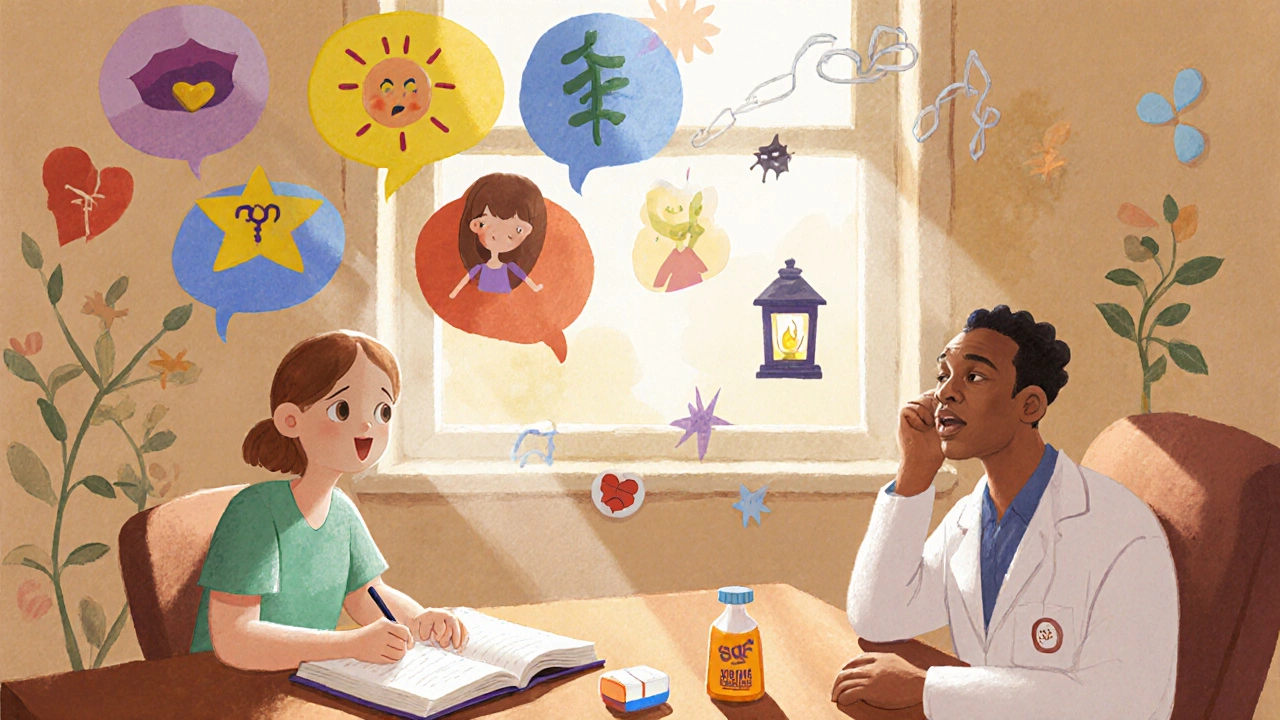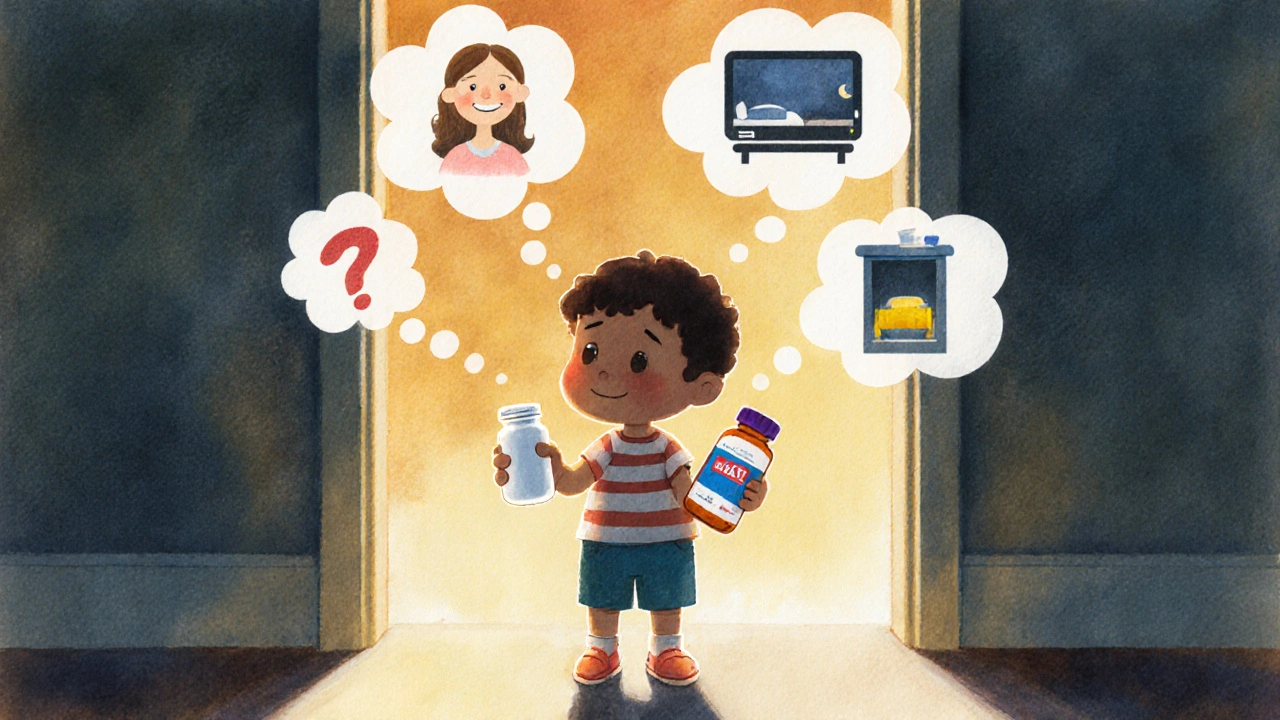When a doctor hands you a prescription for a generic drug, you might not think twice. But what if that little pill feels less like healing and more like a compromise? You’re not alone. Millions of people hesitate to take generics-not because they’re unsafe, but because they don’t feel right. And that feeling? It’s not just about price or packaging. It’s about story.
Why generics feel like second-best
Generic drugs work the same way as brand-name ones. Same active ingredients. Same FDA approval standards. Same effectiveness. But here’s the catch: people still believe they’re inferior. A 2023 study in Health Affairs found that 38% of patients in the U.S. thought generics were less effective, even when told otherwise. Why? Because their minds are wired to respond to meaning, not just chemistry. Think about it. When you buy a name-brand painkiller, you’re not just buying acetaminophen. You’re buying a story: decades of advertising, TV jingles, trusted logos, and the quiet reassurance that this is the one your mom always used. Generics? They come in plain white pills with no name, no history, no emotional weight. To the patient, it’s not a drug-it’s an absence. This isn’t irrational. It’s human. Brand psychology isn’t just for soda or sneakers. It’s baked into how we accept health treatments. And when the story is missing, so is the trust.What narrative medicine actually does
Narrative medicine doesn’t try to fix the pill. It fixes the meaning. Developed by Dr. Rita Charon at Columbia University in the late 1990s, narrative medicine is the practice of listening to-and helping patients tell-their full health story. Not just symptoms. Not just diagnoses. But the fear of losing independence. The guilt of being a burden. The shame of needing help. The grief over a body that no longer feels like yours. When a patient says, “I don’t want to take this generic,” what they’re really saying might be: “I’m scared this won’t work because I’ve lost control already.” Or: “I don’t want to feel like I’m settling.” Clinicians trained in narrative medicine don’t respond with facts. They respond with presence. They ask: “What does this pill mean to you?” One nurse in a VA clinic started asking veterans taking generics for hypertension: “What’s the last name you remember on your pills?” Many replied with the brand name-even if they’d been on the generic for years. The nurse didn’t correct them. She nodded. Then said: “That name carried you through hard times. This one? It’s just a new label on the same medicine that’s keeping you alive.” That’s not therapy. That’s medicine.
How stories change acceptance
A 2021 trial at the University of Kentucky followed 120 patients switching from brand-name statins to generics. Half received standard counseling. The other half sat through a 45-minute narrative session with a trained facilitator. They were asked to write or speak about their experience with illness, their fears about treatment, and what they hoped to regain. After six months, the group that told their story had a 62% higher adherence rate. Not because they understood the science better. Because they felt seen. The same pattern shows up in diabetes care, depression treatment, and even cancer follow-ups. When patients are invited to name their pain, their confusion, their resistance-they stop fighting the treatment. They start working with it. Narrative medicine doesn’t change the drug. It changes the relationship between the person and the drug.The hidden cost of ignoring stories
Ignoring patient narratives isn’t just a missed opportunity. It’s a financial risk. Poor adherence to generic medications costs the U.S. healthcare system an estimated $300 billion a year in avoidable hospitalizations and complications. Most of that isn’t due to cost. It’s due to disconnection. Doctors are pressed for time. They have 7 minutes to explain a new prescription. They say: “This is the same as the brand. It’s cheaper. Take it.” But patients hear: “You don’t matter enough for the real one.” That’s not just a communication gap. It’s a trust fracture. Meanwhile, clinicians burn out. A 2023 study in The Permanente Journal found that over half of pediatric residents showed signs of burnout. Many said they felt like “technicians, not healers.” Narrative medicine doesn’t add more tasks. It changes the rhythm of care. One minute of listening can replace ten minutes of arguing. One story shared can undo a lifetime of mistrust.
How to bring narrative medicine into everyday care
You don’t need a PhD in literature to use this. You just need to be curious. Here’s how real providers are doing it:- Ask open questions: “What’s your biggest worry about this medicine?” instead of “Do you have any questions?”
- Reflect back: “So you’re saying you feel like you’re being asked to settle?” That simple sentence validates the emotion.
- Use metaphors: “Think of this pill like a new pair of shoes. They’re not the same brand, but they’re built to the same specs-and they’ll get you where you need to go.”
- Invite storytelling: “Can you tell me what your health journey has been like so far?” Let silence sit. Don’t rush to fix it.


My grandma took generics for 20 years and never missed a dose. She said, 'The pill doesn't care what it's called, baby-it just wants to help you breathe.' I used to roll my eyes until I saw her walk down the aisle at my wedding, no oxygen tank in sight. Story matters, but so does proof. She didn't need a narrative session. She needed someone to believe her when she said, 'I'm not scared.'
OMG this is literally the most dramatic thing I've read all week 😭 I mean, who even CARES if the pill has a logo?? It's just chemistry!! Why do people need to TELL STORIES to take medicine?? I'm crying. I'm SO over this. 😩💊
The epistemological dissonance between pharmacological equivalence and phenomenological experience is a well-documented phenomenon in medical anthropology. The symbolic capital attached to branded pharmaceuticals operates as a heuristic of efficacy, even when bioequivalence is statistically validated. Narrative medicine, then, is not a therapeutic intervention per se, but a hermeneutic recalibration of the patient-provider epistemic contract.
bruh this is so real 🥹 i took a generic ibuprofen once and just stared at it for 10 minutes like it betrayed me 😅
in india we call generics 'jugaad medicine'-cheap, works, no fancy packaging. my auntie takes them for BP and says, 'beta, if the doctor says it's same, why waste money?' but she still keeps the old brand bottle on the shelf. just in case. i get it. it's not about science. it's about safety nets.
This is the most unscientific, emotionally manipulative nonsense I’ve ever read. You’re encouraging patients to fetishize placebo effects and punish doctors for using cost-effective treatments. This isn’t medicine-it’s a cult. And the fact that you’re calling this 'narrative' is just a euphemism for 'irrational fear-mongering.' The FDA approves these drugs for a reason. Stop infantilizing adults.
lol so now we're giving people therapy sessions to take pills? next they'll make us hug our prescriptions. i bet this whole 'narrative medicine' thing is just big pharma's way to sell more branded drugs under the guise of 'empathy.' they don't want generics to succeed. they're scared.
my cousin in delhi takes generic metformin and says it works better than the brand because it's not coated with sugar and chemicals. i dont know if its true but he swears by it. also he calls it 'the cheap miracle.' funny how the same pill can mean different things to different people
Who funded this study? Big Pharma? The FDA? The NIH? Because if you think people are rejecting generics because of 'stories' and not because they’ve seen the side effects, you’re living in a fantasy. I’ve seen people crash after switching. No one talks about that. Why? Because it doesn’t fit the narrative.
I remember my first generic pill. I held it in my palm like it was a ghost. My dad died on brand-name meds. I didn't want to take something that didn't carry his name. It took me three months to swallow it. Not because I thought it wouldn't work. Because I thought it would. And that scared me more than any side effect ever could.
I work in a clinic in Glasgow and we’ve started doing 2-minute story check-ins before prescribing. One man said, 'I used to take the blue one because it reminded me of my wife’s eyes.' We didn’t change the drug. We just wrote 'blue' on the label. He’s been on it for a year now. Simple. Human. Works.
There's a deeper layer here. We've turned medicine into a transaction. But healing is a ritual. The pill is the object. The story is the offering. When you take a generic, you're not just ingesting chemistry-you're surrendering a piece of your identity. That's not irrational. It's sacred. And we've forgotten how to honor that
as a med student i was taught to say 'same active ingredient' but i learned fast that patients dont care about that. one lady told me her mom took the pink pill and lived to 92. the generic was white. she said 'white means death.' i started writing 'pink equivalent' on the script. she cried. she took it. no science changed. just the label. and the trust.
THIS IS A BIG PHARMA TRAP. THEY WANT YOU TO THINK GENERICS ARE EQUAL SO THEY CAN CUT COSTS AND SELL MORE. THE FDA IS CORRUPT. THEY LET BAD DRUGS THROUGH. I SWITCHED TO A GENERIC AND GOT RASHES. THEN I FOUND OUT THE FILLER WAS TOXIC. THEY HIDE THIS. THEY DON’T WANT YOU TO KNOW. YOU’RE BEING MANIPULATED. THIS 'NARRATIVE' STUFF IS JUST A SMOKE SCREEN.
bro i get what u mean but in india we dont have that luxury. my uncle took generic insulin for 12 years. his sugar was stable. the brand was 3x the price. he said 'i dont need a story. i need to live.' maybe the real problem is not the story but the fact that in america, people can afford to be scared. here, you just take the pill and hope.